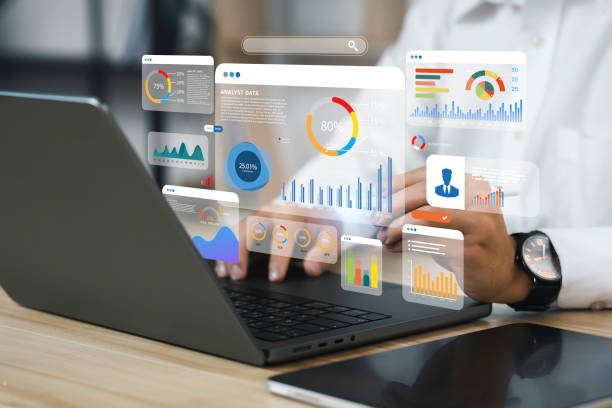Imagine the last time that you were looking to buy a messaging application for your company. You might have read industry-specific websites and whitepapers. You may also have compared features and prices, evaluated reviews, and evaluated pricing.
You visited several vendor websites to compare their services, features, pricing, and customer service. You might have interacted with chatbots and sales representatives or requested demos in order to gain a deeper understanding of the product.
You probably encountered targeted advertising, received emails that highlighted relevant solutions, and felt a seamless continuity of experience when visiting vendor websites.
These tailored experiences have sparked curiosity as to how businesses are orchestrating personalized B2B buying journeys using digital channels in order to cater to customer needs.
What is a Customer Data platform?
A customer data platform is software that compiles data from different sources, including communication channels, platforms, tools, and systems. The central database provides a 360-degree customer view, enabling personalization.
What are Customer Data Platforms?
Four main functions can be attributed to a CDP:
- Data Collection A CDP is the hub of all customer data. It gathers, organizes, and manages all customer data from both inside and outside of the organization.
- Data harmonization. The CDP links anonymized leads to confirmed customers after collecting all data.
- Data activation. Once a CDP has unified detailed customer profiles, the information will be available to all teams, technology platforms, and employees. This ensures that everyone working with the data is consistent.
- Extracting insights By consolidating all information, a CDP allows businesses to track the entire customer journey. This visualization enables organizations to gain valuable insights, such as buyer personas and customer segments, in order to improve their business processes.
A CDP, then, is the foundation of a seamless, personalized journey for customers.
Why should businesses use a customer data platform?
CDPs can help businesses create customer-centric experiences, which is why companies should care.
First-party data is captured.
A CDP collects first-party data to help you understand your customers and their expectations. This first-party information can be used to make crucial business decisions that will help your company thrive.
Unify customer data
Two components make up the handling of customer data. Data collection is the first component, as we have already discussed. Data sharing is the second. A CDP centralizes data about customers and makes them available to all parties, regardless of team or department. They can use this data to improve their business processes.
The organization is no longer confined to its silos
When teams or departments are unable to transmit or distribute customer data, they form silos. A data resource cap within certain segments can be detrimental to your business. By centralizing customer data, a CDP can break down these silos.
This boosts business operations.
Data is the main source of business intelligence. A CDP democratizes the data and allows teams and departments to extract high-impact, meaningful insights. Then, they can use that knowledge to develop new strategies or refine existing ones for improved performance.
Data protection and privacy are guaranteed.
Data protection and privacy are becoming increasingly important. It can be hard to protect distributed customer data from cyber threats and malicious entities. A CDP centralizes all customer data and eliminates any loose ends, making it easier to protect customer data.
What is the Best CDP for your Business?
Obtain stakeholder buy-in
You will need marketing, sales, customer success, and IT support before you can consider investing in a CDP.
Begin by understanding the different ways teams use data and what problems they encounter. Determine how a CDP could intervene to minimize or eliminate these pain points.
Use cases for Outline.
You’ll come across a variety of use cases when pitching a CDP as a solution to various data-related issues. You can use it to improve data hygiene, personalize customer journeys, and understand customers.
Understanding specific use cases will help businesses choose and use a CDP effectively.
Audit your tech stack.
Your CDP will not operate in a vacuum. It will be integrated into CRM platforms and other systems, such as payment gateways, marketing tools, help desks, and contact centers. Take stock and make a list of all the systems and tools that will be compatible with the CDP.
It will be easier to select the CDPs that support the integrations you need if you know what your requirements are. It would be best if you eliminated any CDPs that are incompatible with your team’s tools and platforms.
Key features of a car
Identify key features and functionality that your CDP must have. Here are some recommendations:
- Identity Resolution: Creates an individual profile when customers switch from one channel, touchpoint, or device to another.
- Data Integrations: Your CDP should integrate with your existing tech stack in order to ingest, activate, and store customer data.
- Custom Segmentation This feature allows for the creation of custom segments to personalize customer journeys.
- Privacy & Security: It must be certified GDPR compliant or ISO grade to ensure compliance with the highest standards of data privacy and security.
- Advanced Analytics: CDPs that have advanced analytics capabilities are able to present business intelligence visually and in an easy-to-digest format for quicker decision-making.
You can tweak your list just as you would for the CDP use cases.
Assess vendors
Sites like G2, Capterra, and GetApp provide reviews from relatively impartial customers.
Sign up for a product demo or trial to test each CDP and see if it is right for you.
Before you choose a vendor, make sure to vet them thoroughly.

